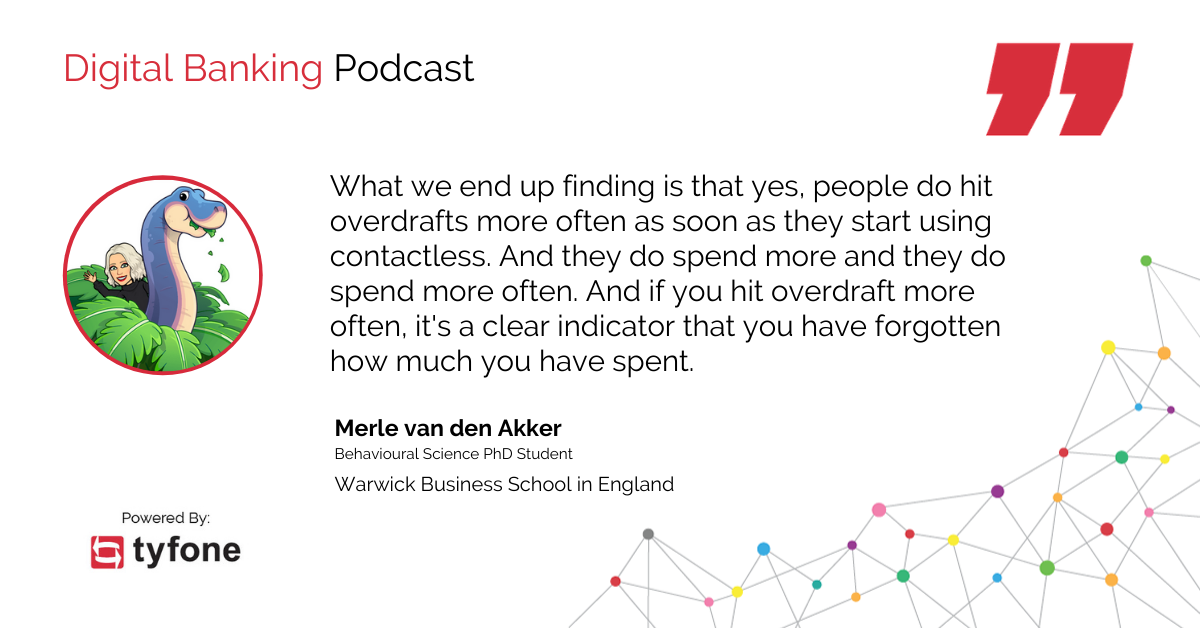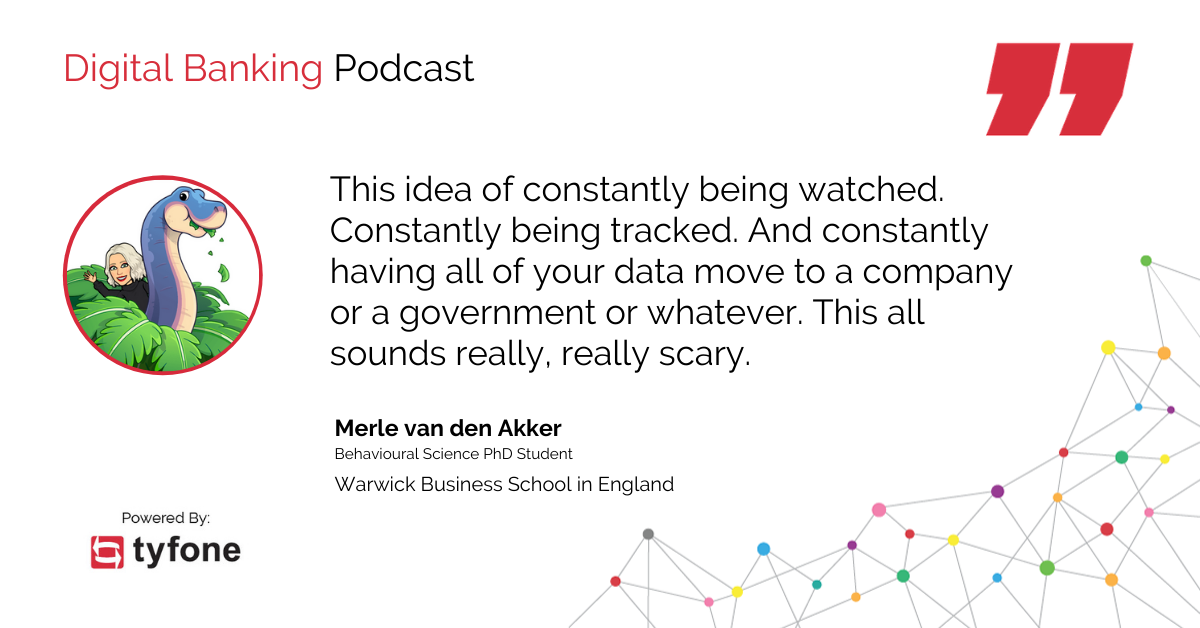How Fintech Can Help and Hurt Consumers, According to This Behavioral Scientist
May 10, 2021
Consumers increasingly demand convenience, even though research shows convenience can cost a lot — literally. Behavioral scientist Merle van den Akker explains why this is, and what banks and credit unions can do about it.
- Despite fintech’s best intentions, more convenient banking and payment methods make it easier for people to overspend — and to do it more often, according to research.
- The personal finance tools that are best at keeping consumers on track with their financial goals are ones that require pausing and thinking, including low-tech solutions like tracking purchases using simple pen and paper.
- To make the most of digital solutions, consumers still need to understand the basics of personal finance. “You’ve got all the cool gadgets and none of the knowledge, and unsurprisingly it doesn’t work,” says behavioral scientist Merle van den Akker.
Fintech offers tidy solutions to the problems of our era, whether it’s not knowing how to budget or simply wanting to avoid handling wads of germy $5 bills.
In practice, though, this exciting new technology may actually encourage people to spend more money — and that includes money they don’t have.
This is the paradox at the heart of behavioral scientist Merle van den Akker’s research. Merle, a doctoral student at the University of Warwick in the United Kingdom, focuses on contactless payment methods and how they impact the way people think about and manage their money.
She also explores these subjects on her blog, Money on the Mind, and her podcast, Questioning Behaviour, which she co-hosts with fellow doctoral student Sarah Bowen.
On an episode of the Digital Banking Podcast, Merle discusses findings from her research, like the value of friction in helping consumers control their spending, the hidden costs of convenience and why the best personal finance tools may also be the simplest.

The cost of consumer convenience
One noteworthy finding from Merle’s research: Contactless payment methods affect human behavior in ways that are strikingly similar to the effects of credit cards.
Prior to the advent of credit cards, when someone had to make a purchase, they had to do it with the cash they had. Credit cards changed that by allowing consumers to spend money they don’t actually have.
“You’re borrowing money from your future self, because you’re going to have to repay it eventually,” Merle says. “But that might not be money you currently have, which changes the relationship that you have with money, or the finiteness of money, drastically.”
That change in the way people relate to money can be seen in consumer spending trends, according to Merle, who notes credit cards allow people to spend more and to spend more often. And that also means they are racking up more debt and compound interest, often without being fully aware of it.
The same dynamic is at play with contactless payment methods, where consumers who used smartphones or smartwatches to make purchases spent more money and spent it more often. This was true even when the payment was connected to a debit account.
“What we do end up finding is that, yes, people do hit overdrafts more often as soon as they start using contactless,” she says. “If you hit overdraft more often, it’s clearly an indicator for the fact that you’ve forgotten how much you have spent, or at least you’ve forgotten how much you had left to spend, then just went over it.”
That’s because paying for something by swiping a card or waving a smartphone is a transaction that doesn’t have a lot of salience — the human brain often doesn’t consider contactless payments to be as worthy of notice as paying with cash. Merle says research shows people are more likely to remember how much they’ve actually spent when they use cash as opposed to other methods.
To put it another way: Cash is less convenient, but that lack of convenience is what makes it more memorable.
The goal of making personal finance more convenient for consumers is also behind the development of personal financial management (PFM) tools, which aim to make tedious tasks like tracking spending and drafting a budget easier for consumers.
Unfortunately, these tools often don’t achieve that goal, as Merle’s research has found that consumers who use PFM tools to check their balances and track their spending actually end up spending more than those who don’t.
“That is really counterintuitive because you’d think, and you’d hope, that as soon as people track their spending and know exactly what they have left on their balance, they’d stay within their means,” she says. “But what ends up happening is that they see the balance that they have left as some type of a goal.”
Furthermore, Merle points out that the people who are most likely to adopt the latest in fintech tend to be younger, which means they likely haven’t had access to the same kind of personal finance education that their parents and grandparents had, many of whom learned how to balance a checkbook and draft a budget.
“With that age, what you’re lacking often … is experience and actual knowledge of the financial system,” Merle says. “So as a result, you’ve got all the cool gadgets and none of the knowledge, and unsurprisingly it doesn’t work.”

What actually works for consumers (think low-tech)
Consumers do have tools at their disposal when it comes to getting their financial houses in order, but those tools rarely come packaged in well-designed apps with millennial-friendly branding.
In fact, the tools that work best are probably the same tools their parents and grandparents used: a pen and notebook, cash and an understanding of the basics of personal finance.
“I want to say low-tech, but … it’s no-tech,” she says. “There’s no technology in you applying a pencil to paper and figuring out how much you have spent.“
Merle cites bullet journals and kakeibo, a Japanese way of managing finances through journaling, as two examples of personal finance tools that have a lot of salience for the people who use them. She says the act of looking through receipts and writing them down can actually help the consumer better remember how much they spent and what they spent it on.
She also recommends using cash when possible, as the finite nature of cash means you are not going to spend more than what you actually have.
“With cash, once it’s gone, it’s gone,” she says.
Merle says she’s been anticipating a war on cash for a while now, as financial institutions find dealing with cash to be more costly and less convenient. That’s exactly why people should use cash more.
“Cash is not convenient, which is exactly why you should be using it, if you want to spend your money wisely,” she says.
And finally, it’s key for people to understand the basics of personal finance, especially if they want to use PFM tools. All of the cool technology in the world will not compensate for knowing how to budget or even why you should have a budget in the first place.
What financial institutions can learn from low-tech personal finance
But it’s not all doom and gloom for fintech that aims to help consumers develop healthy financial habits.
Financial institutions can look into the use of artificial intelligence to support the consumer’s financial goals. For example, AI could look at the consumer’s savings goal and encourage the consumer to set that money aside at the beginning of the month instead of at the end. The AI could also track transactions throughout the month and warn the consumer if their spending has exceeded their ability to save.
Merle cautions that this kind of AI would need to be developed by people who also understand personal finance and human behavior, because otherwise it could backfire.
“[A lot of these tools] are designed for managing money, but they aren’t designed for managing people who don’t know how to manage money,” she says.
Consumers usually expect the latest technology from their financial institutions, especially if it promises to make their lives more convenient. The problem is good financial habits require some friction, something that makes the consumer pause and think about what they’re doing before they actually do it. That is anything but convenient.
Financial institutions that want to support consumers should be aware of this tension between the desire for convenience and the importance of friction when developing their digital products.
Many neobanks — or online-only banks — do a good job at striking this balance, citing U.K.-based online bank Monzo as an example. She says the app was designed with behavioral science in mind, like the ability to hide savings balances from the front screen. Merle credits the decision to obscure saving balances and says the reasoning is actually “very straightforward.”
She explains: “You don’t spend the type of money that you don’t think you have.”






